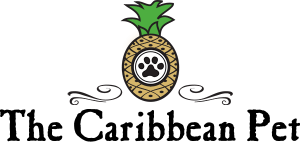- Language: English and local Patios
- Currency: Eastern Caribbean dollar
- Temperature: Average 65-85°F winter, 75-95°F summer
- Square Miles: 238 Approx.
- Population: 153,000
ABOUT. St Lucia, the second largest of the Windward Islands, is located between St Vincent and Martinique. Saint Lucia was named after Saint Lucy of Syracuse by the French, the island’s first European settlers. The volcanic island of Saint Lucia is more mountainous than many other Caribbean islands, with the highest point being Mount Gimie, at 950 metres (3,120 feet) above sea level. The island is now independent, but British and French cultural influences remain from periods when those nations ruled the island. St Lucia’s capital city of Castries is located on a natural harbor bay that lends itself to cruise ship docking. The city’s Derek Walcott Square features a 500 year old saman tree. St. Lucia is only 27 miles long and 14 miles wide, with a shape that is said to resemble either a mango or an avocado. The Atlantic Ocean surrounds its eastern shore as beaches on the west coast are along the Caribbean Sea. Its dramatic twin coastal peaks, the Pitons, rise 2,000 feet up from the sea, shielding magnificent rain forests where exotic plants and birds flourish. On the island beautiful tropical birds abound including endangered species like the St. Lucia parrot and orchards of mango, banana, coconut, and papaya trees adorn certain island areas.
St. Lucia has been inhabited since long before colonial times, and its cultural treasures are a fascinating melange of its rich past and its many different traditions. The French were the island’s first European settlers and signed a treaty with the native Carib Indians in 1660. England took control of the island from 1663 to 1667. The island switched so often between British and French control, Saint Lucia was known as the “Helen of the West Indies”. It was at war with France 14 times. Saint Lucia continued to be contested by France and Great Britain until the British secured it in 1814, as part of the Treaty of Paris ending the Napoleonic Wars. Saint Lucia was considered part of the British Windward Islands colony. From 1958 to 1962, the island was a member of the Federation of the West Indies. On February 22, 1979, Saint Lucia became an independent state of the Commonwealth of Nations associated with the United Kingdom. Saint Lucia’s legal system is based in part on both the civil law and English common law.
Since it is fairly close to the equator, the daily temperature of around 84 degrees does not fluctuate much between winter and summer. Saint Lucia has been able to attract foreign business and investment, especially in its offshore banking and tourism industries, which is Saint Lucia’s main source of revenue. The manufacturing sector is the most diverse in the Eastern Caribbean area, and the government is trying to revitalise the banana industry. Saint Lucian Creole French, spoken by almost all of the population, is in addition the the primary English language. Saint Lucia boasts the highest ratio of Nobel laureates produced in relation to the total population of any sovereign country in the world. The winners from St. Lucia, Sir Arthur Lewis won the Nobel Prize in Economics in 1979, and the poet Derek Walcott received the Nobel Prize in Literature in 1992. Caribbean music genres include Reggae, Compas, Calypso, Soca, Dancehall, Zouk, and Salsa. In addition, Saint Lucia has a strong indigenous folk music tradition. The culture of Saint Lucia remains influenced by African, East Indian, French and English heritage. The island’s people are known for their warmth and charm.

